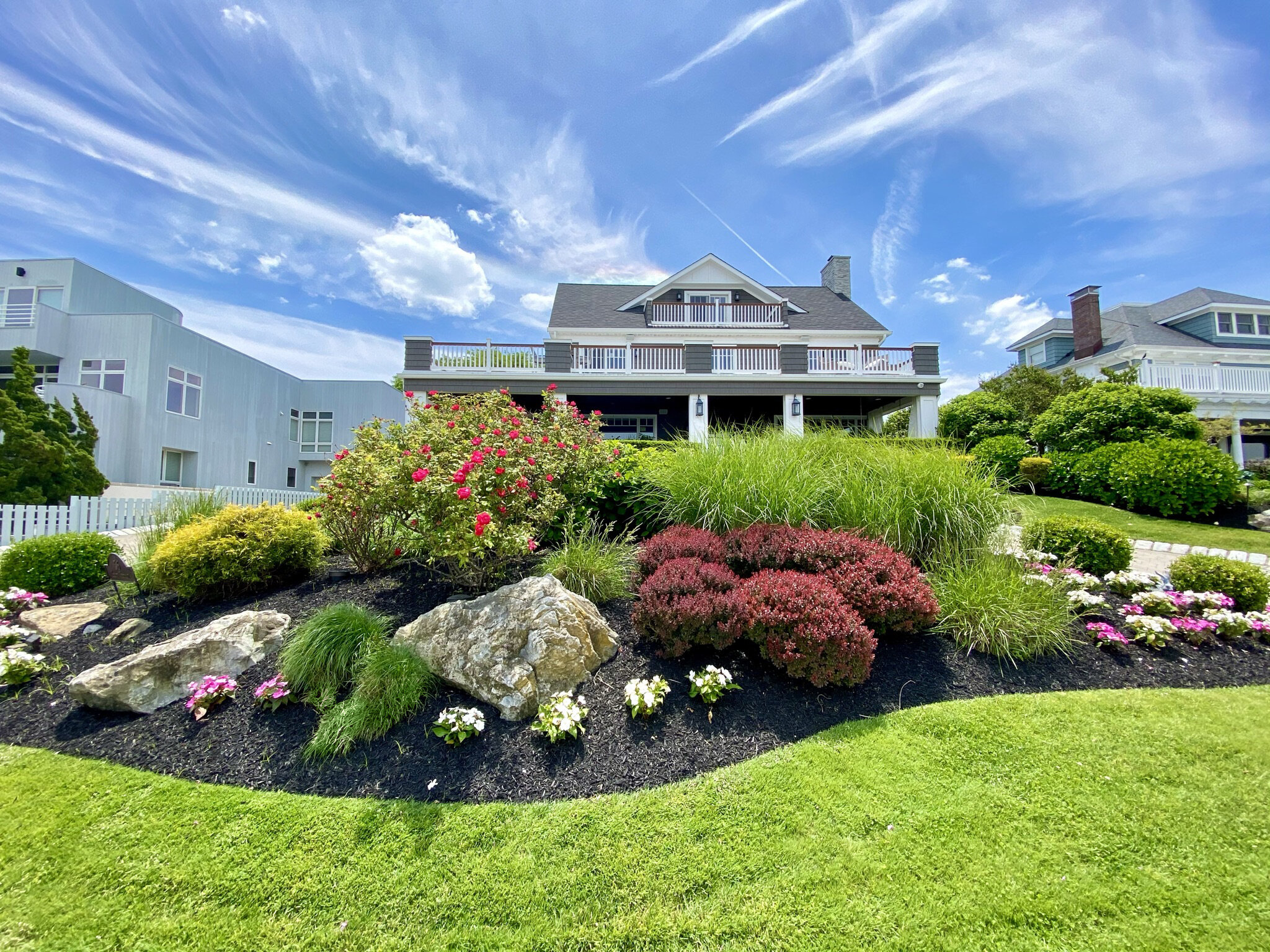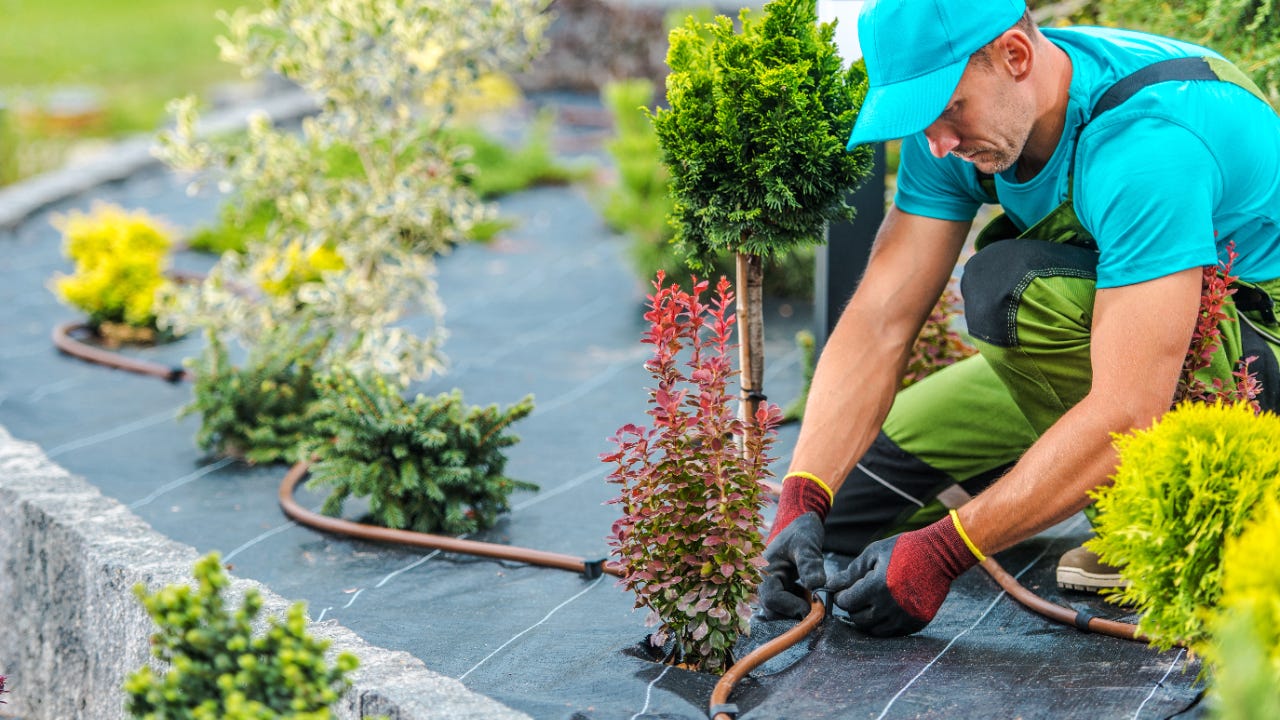Update Your Building with Customized Palm Desert Landscaping Solutions
Update Your Building with Customized Palm Desert Landscaping Solutions
Blog Article
A Comprehensive Overview to Creating and Implementing Effective Landscape Design Solutions
The art and scientific research of landscape design extend beyond simple aesthetics; they involve a thoughtful assimilation of layout concepts, ecological stewardship, and functional implementation. What strategies can one use to make sure these landscapes not just thrive but additionally flourish in consistency with their environments?

Recognizing Landscape Design Concepts
One might question what foundational aspects add to efficient landscape design. At its core, effective landscape style rests on numerous crucial concepts that lead the arrangement and selection of elements within a space. These principles include unity, percentage, balance, and rhythm, each serving to create an unified outside atmosphere.
Unity refers to the cohesive relationship amongst different parts, making certain that they interact cosmetically and functionally. Equilibrium can be attained via balanced or asymmetrical plans, allowing the landscape to really feel stable and welcoming. Percentage entails comprehending the range of components in connection with each other and the surrounding atmosphere, advertising aesthetic harmony and convenience.

Analyzing Your Outdoor Space
Before executing the principles of landscape style, a complete evaluation of your outside room is important. This first examination helps specify the extent of your landscaping project and makes sure that your layout aligns with the special qualities of your home. Begin by evaluating the measurements of your room, taking exact dimensions to understand the offered area for numerous elements such as pathways, patios, and gardens.
Following, observe the existing attributes of your landscape, including topography, dirt top quality, and water drainage patterns. These variables considerably influence plant choice and positioning. Furthermore, analyze the sunlight exposure throughout different areas throughout the day, as this will impact the sorts of plants that flourish in your garden.
Think about the microclimates developed by frameworks, trees, and various other obstacles, as they can impact temperature level and wetness degrees. Lastly, take note of any type of existing plants or hardscape aspects that you wish to eliminate or maintain. This detailed examination lays the foundation for a efficient and knowledgeable landscaping service, making certain that your design is not just visually pleasing but lasting and also functional for several years to find.
Lasting Landscaping Techniques
Including lasting landscaping methods is vital for creating an environmentally responsible exterior area. These techniques not only promote environmental balance but additionally enhance the practical and aesthetic value of a landscape. One foundational strategy is the usage of indigenous plants, which call for less water and upkeep while supporting regional wild animals. Implementing efficient watering systems, such as drip irrigation, lessens water waste and makes sure that plants receive adequate dampness.

One more effective method is the tactical positioning of bushes and trees to provide all-natural windbreaks and color, thus lowering energy expenses (Palm Desert Landscaping). Rainfall gardens can be integrated into the landscape style to handle stormwater drainage properly, filtering system contaminants before they enter waterways
Choosing the Right Plants
Picking the right plants for your landscape is vital to attaining both aesthetic appeal and eco-friendly consistency. The process starts with an understanding of your regional environment, soil conditions, and the details microenvironments within your landscape. Assessing factors such as sunlight direct exposure, wetness levels, and existing flora will certainly assist you choose plants that flourish in your distinct setting.
Consider including indigenous plants, as they are well-adapted to neighborhood conditions, call for much less maintenance, and support neighborhood wildlife. In addition, picking a varied range of types can enhance biodiversity while lowering the risk of illness and parasite episodes. It is vital to review the growth habits, blooming durations, and seasonal colors of potential plants to develop a dynamic and natural landscape.
In addition, consider the intended use the room; click this as an example, if the location will certainly experience high foot traffic, opt for durable ground covers. By attentively picking plants that align with both your aesthetic goals and environmental needs, you can create a lasting landscape that not just boosts your building however also contributes positively to the bordering community.

Implementation and Upkeep Approaches
As soon as the right plants have been selected for your landscape, the emphasis changes to reliable implementation and continuous upkeep strategies. Effective installation begins with appropriate website preparation, which consists of dirt testing to determine nutrient degrees and pH, followed by changing the dirt as needed. Very carefully organize plants according to their growth behaviors and light demands, ensuring ample spacing to promote healthy and balanced development.
Watering is a vital element of execution. Establish a watering timetable that thinks about the certain needs of each plant species, readjusting for seasonal modifications. Using drip irrigation systems can improve water original site efficiency and decrease runoff.
Maintenance approaches should be implemented to make sure the durability and vigor of your landscape. Regular jobs consist of weeding, mulching, and trimming to regulate growth and protect against illness. Fertilizing ought to be carried out based upon soil tests, supplying the necessary nutrients without over-fertilizing.
Monitoring for pests and illness is necessary; early detection can prevent substantial damages. Lastly, seasonal changes to maintenance regimens, such as winterizing perennials and preparing for spring development, will guarantee that your landscape continues to be aesthetically attractive and healthy and balanced year-round.
Conclusion
Successful execution and continuous maintenance better make certain the durability and vigor of landscapes. By incorporating these aspects, landscapes can be changed into attractive, practical settings that promote biodiversity and contribute positively to area wellness.
One could question what foundational aspects contribute to reliable landscape design. At its core, effective landscape style hinges on a number of key concepts that assist the arrangement and choice of components within a space.Picking the right plants for your landscape is crucial to achieving both visual appeal and ecological consistency. It is essential to review the development routines, growing periods, and seasonal colors of possible plants to produce a natural and vibrant landscape.
Once the best plants have actually been selected for your landscape, the emphasis shifts to efficient implementation and ongoing maintenance methods.
Report this page